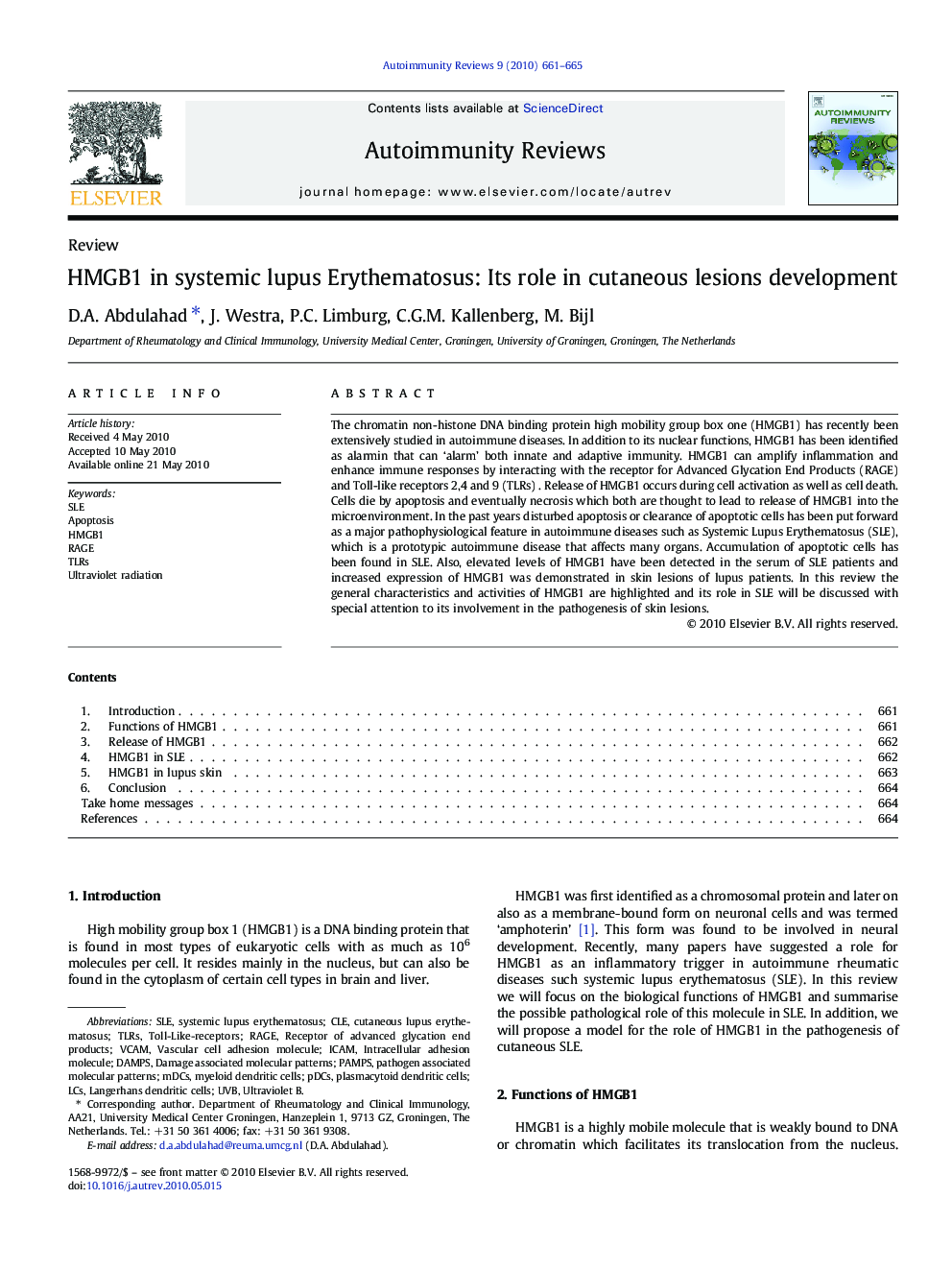| کد مقاله | کد نشریه | سال انتشار | مقاله انگلیسی | نسخه تمام متن |
|---|---|---|---|---|
| 3342177 | 1214269 | 2010 | 5 صفحه PDF | دانلود رایگان |

The chromatin non-histone DNA binding protein high mobility group box one (HMGB1) has recently been extensively studied in autoimmune diseases. In addition to its nuclear functions, HMGB1 has been identified as alarmin that can ‘alarm’ both innate and adaptive immunity. HMGB1 can amplify inflammation and enhance immune responses by interacting with the receptor for Advanced Glycation End Products (RAGE) and Toll-like receptors 2,4 and 9 (TLRs) . Release of HMGB1 occurs during cell activation as well as cell death. Cells die by apoptosis and eventually necrosis which both are thought to lead to release of HMGB1 into the microenvironment. In the past years disturbed apoptosis or clearance of apoptotic cells has been put forward as a major pathophysiological feature in autoimmune diseases such as Systemic Lupus Erythematosus (SLE), which is a prototypic autoimmune disease that affects many organs. Accumulation of apoptotic cells has been found in SLE. Also, elevated levels of HMGB1 have been detected in the serum of SLE patients and increased expression of HMGB1 was demonstrated in skin lesions of lupus patients. In this review the general characteristics and activities of HMGB1 are highlighted and its role in SLE will be discussed with special attention to its involvement in the pathogenesis of skin lesions.
Journal: Autoimmunity Reviews - Volume 9, Issue 10, August 2010, Pages 661–665